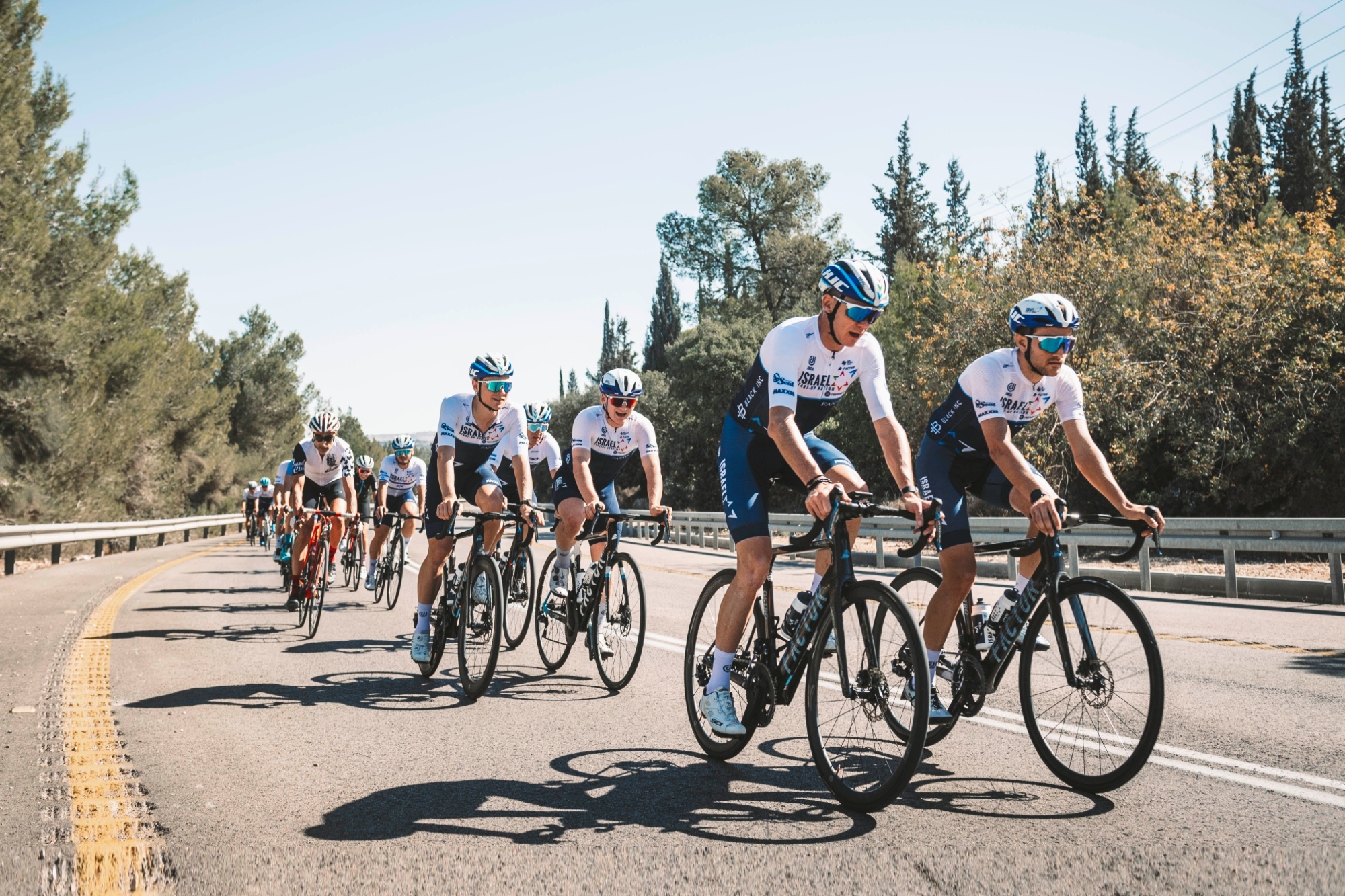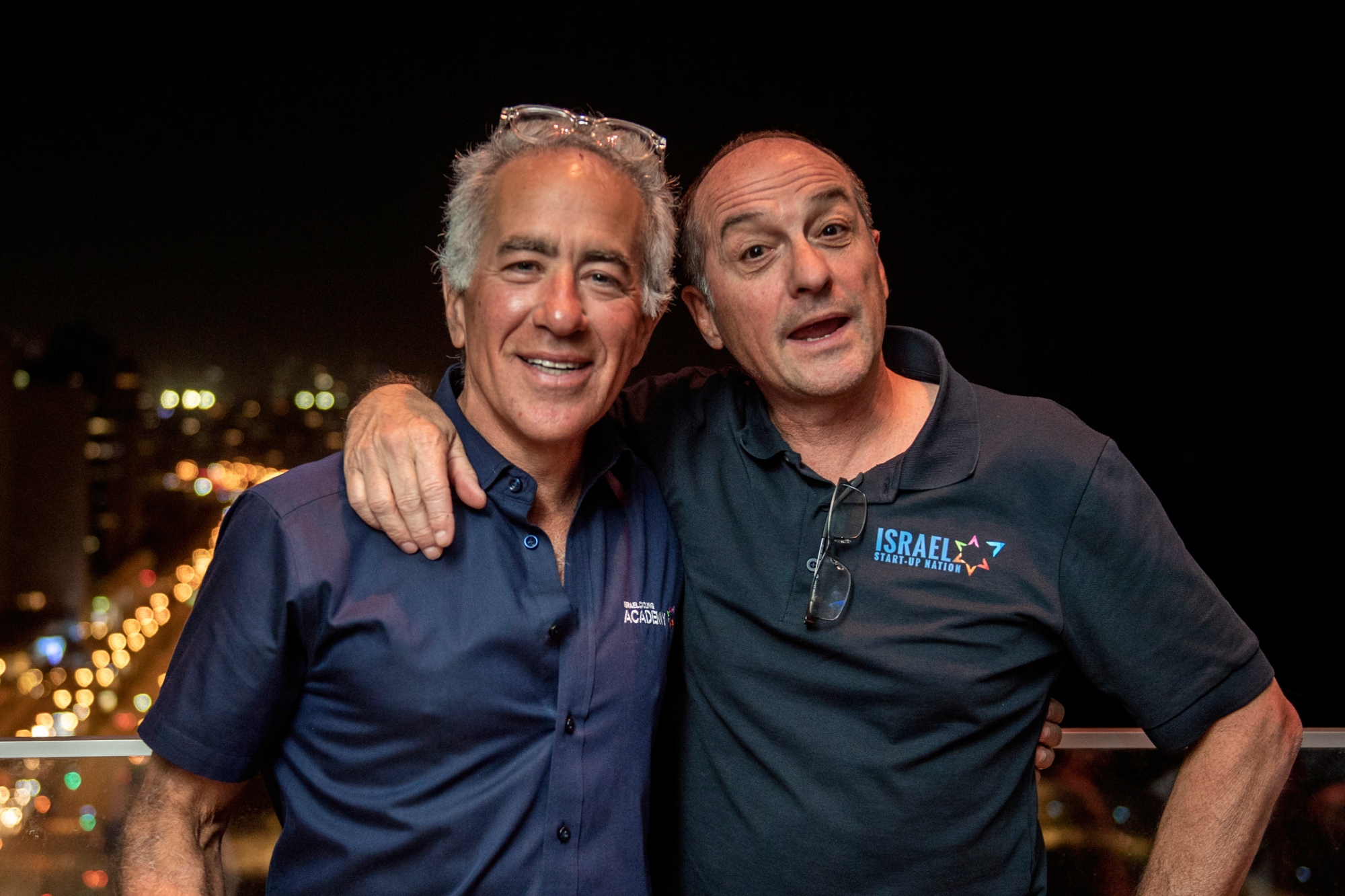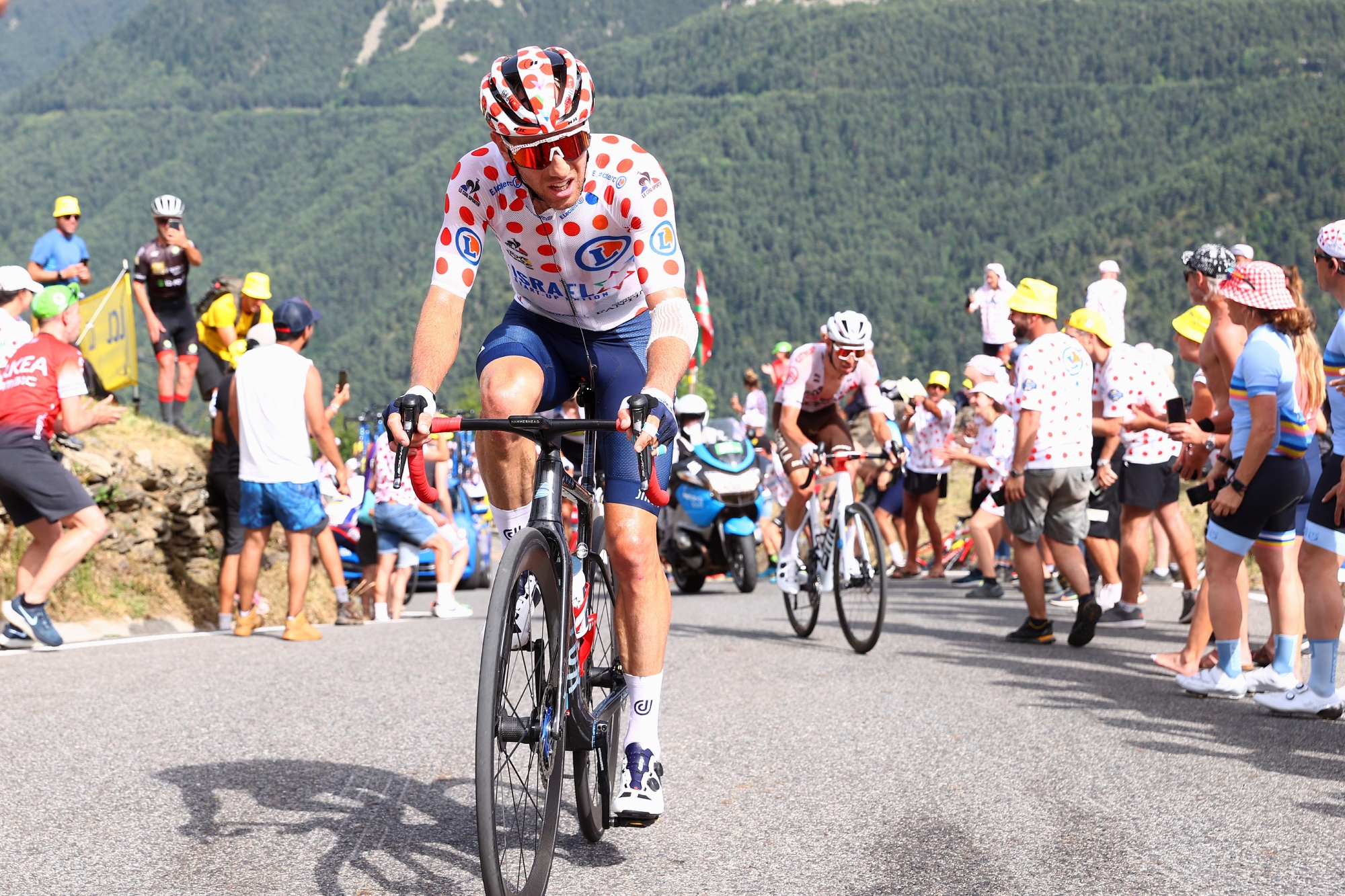Welcome to the future: The innovation and new tech driving Israel Start-Up Nation
Talking data analytics, performance envelopes, machine learning and more with performance director Paulo Saldanha

At the end of their second season at WorldTour level, Israel Start-Up Nation have enjoyed their best year since the team's foundation in 2015, racking up 17 wins and establishing themselves as the 10th-best team in the world according to the UCI end-of-year rankings.
Riders such as Dan Martin, Mads Würtz Schmidt, Michael Woods, and Ben Hermans – who this year won stages at the Giro, Tirreno-Adriatico, Tour de Romandie, and the overall title at the Arctic Race of Norway – have enjoyed standout campaigns while other riders on the team have also done well.
Team co-owner Sylvan Adams announced on the first night of the team's end-of-year camp that he was hoping the team can aim for top five in the UCI rankings by this time next year, which would be no mean feat given the strength of teams like Deceuninck-QuickStep, Ineos Grenadiers, Jumbo-Visma, UAE Team Emirates, and Bahrain Victorious.
ISN have not packed their team with superstars or monopolised the most promising young talents around, charges which could be levelled at certain other teams they're competing against. So how have they got to where they are today? And how will they continue their rise next year and beyond?
Of course, like any other team competing at the top level of professional cycling, ISN has a group of very capable riders, directeurs sportifs, coaches, masseurs, mechanics and so on, but they might just have something extra, something that other teams don't.
This is where Paulo Saldanha comes in. The 58-year-old Canadian is officially the performance director at ISN, a fairly standard title for the person overseeing coaching and performance at a cycling team. But when you dig beyond that title – into concepts such as machine learning, military-grade communication protocols, performance envelopes, and data analytics, all of which came up during Cyclingnews' interview with Saldanha – and it's clear that the team isn't doing things in the usual way.
"The first thing is that I'm kind of a hybrid between a coach, a physiologist and an intuitive understanding of endurance sports from my time as an endurance athlete," Saldanha, a former Ironman triathlete, told Cyclingnews during the walk back to Tel Aviv following a team bonding meal in Jaffa during the ISN October camp.
Get The Leadout Newsletter
The latest race content, interviews, features, reviews and expert buying guides, direct to your inbox!
"One of the things I bring to the table – I think, or at least I've been told this and I kind of sense it – is that I feel I have an ability to draw from both sides of the camp of coaches that are on the spectrum of very, very scientific approach, and you have another spectrum of coaches that are old school and extremely experiential based and intuitive.
"As part of my job in helping build this high-performance culture I also put together a small team to help build a data analytics platform that monitors how our riders and how our team is doing from a macro to a micro level. And I present these things to the owners, to the sponsors, to show how our team is evolving and developing, and to demonstrate how we are an athlete-centred team."
Saldanha has known Adams for over 20 years, with the then-future team owner visiting him at a PowerWatts (Saldanha's training company, which uses power, cadence and a proprietary software "way, way before high-intensity interval training was even a thing") studio for training advice.
Adams went on to become a Canadian and world champion on road and track at Masters level, and the rest is history, with Saldanha coming on board in 2016, when ISN was still known as Cycling Academy.
"I only really coach three riders on the team," Saldanha says. "My role on the team is really to help Sylvan, Kjell Cärlstrom [general manager] and Rik Verbrugghe [sports manager] to architect what I call a high-performance culture. This is something that's often missing in professional cycling.
"Here, we have systems that measure where the riders' gaps are, and every year we develop methods to mitigate those gaps, whether it's through people and human resources, whether it's through equipment, whether it's through sponsorship relationships, all of these things."
'Performance envelopes', not peaks

The process and the methods that Saldanha and ISN employ may not be unique in the cycling world – Saldanha, having previously done a stint at SpiderTech almost a decade ago hasn't had any experience inside the other WorldTour teams – but some of the riders who moved over from Katusha in 2020 certainly noted the differences.
"We've hired staff and sports scientists and riders, and without exception they say that what we have is much more than what they had on their teams, much more," Saldanha says.
"That's great to hear but that doesn't mean they didn't have those things on their teams – it could mean that the teams had those things, but they just never saw them. With us, we're kind of an open team and we share everything with our riders.
"Just this morning I reviewed with four of five riders their yearly review – this is what they did, this is what happened, these are the loads they can handle, let's set benchmarks for next year, what do you want to do, and so on. It's an iterative process and that's what I do. I love to do this. I was made to do this job. I was made to do it."
"I think that old school mentality worked for a certain era, let's put it that way. It doesn't work so much and it's not as effective nowadays, but also more importantly the sport has changed – it's a much more dynamic sport, more explosive, more attacking, a younger sport in a sense. My style suits that a little bit more.
"I don't have a template to understand what other teams are doing because it's not like I come from Ineos or Bahrain or UAE. I don't know what those guys are doing. I just know what I think we need to see and then I built a bespoke solution with my team to see that.
"I wish I had a bit more experience because maybe some teams are doing way better things than we are – I don't know – but hopefully as I gain a little bit more experience, I'll refine those widgets and metrics and analytics to be even more effective."
So, then, what exactly are Saldanha and ISN doing that sets them apart from the pack? Well, the first concept is something of an alien one in professional cycling, and likely much of professional sports.
We're all used to the long-established idea of athletes – in cycling and beyond – working towards a peak during the season for their targeted events. However, that isn't something Saldanha believes in. Welcome to the performance envelope.
"We have an interesting perspective on racing. I don't believe in an athlete hitting a specific point in time that's called their peak," says Saldanha. "I believe in creating in what I call the performance envelope.
"That is these two lines of ranges along a graph where the combination of body mass and body composition are optimal, mental state is optimal, health is optimal, power profiling is optimal. When the marriage of those multiple metrics merge together, they create a sweet spot of performance that I call the performance envelope.
"If you can put a rider into competition for a period of three, four, five, six, seven, eight weeks, then the chances are much better that if they're presented with the right opportunity in a race and they can make the right decision, then they can win. It's not about 'I'm going to win that race', it's about 'here's the block of racing and you're in your performance envelope, let's go'. So, it's a different perspective."
Understandably, the performance director of a WorldTour team can't give away too much specific detail about what he's doing in this area, especially with such a unique concept. Saldanha did say that the team uses masses of TrainingPeaks data to generate predictive algorithms for riders.
Michael Woods was one success story from 2021. His performance envelope ran from the latter days of the Tour de France through to the end of the season, Saldanha says. During that time the Canadian finished fifth in the Olympics road race, at the Tour of Britain, and Milano-Torino, as well as taking third at the Giro dell'Emilia, and a top 10 at Il Lombardia.
'Somebody hit me with the lucky stick'

The team – via Adams wide-ranging connections in Israel – also works with Ben Gurion University and Adams' Sports Institute, among a network of technologically advanced and performance-focussed institutions the likes of which surely few other teams have access to.
At the former, in Tel Aviv, the focus is on "data management and using data analytics to help us make better decisions," says Saldanha. "I've always been a fan of using the proper data to make decisions, but you can get crazy with analytics – you can over collect way too much data."
At the latter, a research university in Be'er Sheva, the team makes use of futuristic tools such as artificial intelligence, neural networks, and machine learning.
"We've worked with them to build us a tool to, for example, take the rider's phenotype and overlay that onto the course profile and give us the best decisions on which riders we should put together to participate in this race.
"Then we have a competition with the DS group to see how close the machine can come to what the DS group decides, and even eventually maybe change our mind because the machine has made a better decision. So, these are all the fun things – I'm like a kid in a candy store.
"What other team has at their beck and call a full applied sports science laboratory under a university umbrella that is massive? I'm not just talking about doing VO2 Maxes, I'm talking about wet labs, functional MRI machines, Dexa scans, everything you can imagine in the latest and most modern technology. So, for example, if we want to look at mitochondrial function or the cascade effect of altitude training on haemoglobin mass, we can look at that. Most teams don't have that luxury.
"My interest is in maximising performance potential. It's kind of what turns my crank and it's what I'm passionate about. Somebody hit me with the lucky stick because never would I have thought that I would develop these skills but also be in an environment where I'm enriched by the experience like this. It's phenomenal."
During the camp, ISN's first in Israel since late 2019, the team visited the Sagol Centre for Hyperbaric Medicine and Research, the largest treatment centre of its kind in the world.
Hyperbaric oxygen therapy, a treatment long used to treat people suffering from decompression sickness which sees patients breathe pure oxygen in a high-pressure chamber, is a concept Saldanha took great interest in during the visit.
He says that, on the performance side, the benefits for world class athletes might be negligible, but it's something – another thing to add to a growing list – to investigate, nevertheless.
"I think it's a great tool for soft tissue healing and it has great potential for the brain and dementia and those types of challenges. But I'm interested in the hyperoxic-hypoxic paradox, and we're going to bring some younger athletes from our Continental team to test it and take a look to see how that impacts their fitness.
"The challenge with this is – if I were to put our WorldTour guys in the chamber tomorrow and they do their 90 or 120 minutes for five days a week and they go for six or eight weeks, then of course they're going to get better because they're in their off-season now. So how do you create a scenario there to show they're even better than they would've been? You can't have a cloned person to compare them to, so this is what's challenging for me.
"What I'm hoping we can do is to eventually over a period of time when athletes are washing out, for them to take this treatment to see what the impact is on things like VO2 Max, haemoglobin, haematocrit and all that stuff. I don't know if we're going to find it but we're going to try and look for it."
War rooms and performance pods

While those concepts are all related to the physical and physiological, Saldanha says that he and the team are also looking for other technological advances.
Those include – but are certainly not limited to – new ways to communicate, advances in sight and vision, methods to better oversee how riders train, and even sensors to notify time trialllists when their head moves out of position – a new wave of marginal gains.
"Vision is an area that we're looking into," says Saldanha. "I want to make sure that we properly evaluate specific vision, especially peripheral vision for our sprinters and lead out guys and we're looking at tech for that.
"Then there's communication protocols with the riders. Right now, radios are old tech and they're not very good. There's a lot of tech here for that, like military communication applications and almost bespoke signal transmission standards that they've created, but the question is can you use that in a sports application? Of course, it'd be likely blocked by the UCI...
"We're also building a 'war room', where I or any coach can be in there and it'll pull in live data from the riders. For now, it's going to be for training, but I can see where each rider is and actually fire off messages to rider's Hammerhead units, which are basically like an Android phone with a SIM card in it.
"I can message the athlete because I'm watching him in real time, and I can provide feedback to them to say, 'you have four more efforts left in your legs at this intensity'. That's how crazy it's going to get. That's what I hope to build with this team over time – I have a five-year plan to do it."
All of this, from the war room and the analytics to the neural networks, performance envelopes and the rest, folds into what is, on the face of it, something that can be simplified into quite a simple strategy, built around the Olympic model of coaching, Saldanha says.
"That is to evaluate the athlete and look at where their gaps are and try and mitigate those gaps by building a structure around them. We have a flat structure at our team and in our team we have what I call 'performance pods', so it's one pod for each type of rider – sprinters, time triallists, GC riders, and rouleur-Classics type of rider.
"It's a structure within the team, so like a subsidiary of the team and there's one lead – usually a sports science person or a coach – in each pod, and what they do is build their own team within the team. So, they can hire a biomechanist, use a wind tunnel, whatever they require within the budget.
"We all meet to disseminate information because there's cross-pollination – you don't want to build silos. We all meet to review, update, ask questions, inform and everybody benefits. That's what I've thought up as a structure to build this team.
"Maybe that's why guys say we operate a little differently because I don't think other teams operate that way. We also have other pods like nutrition and strength and conditioning. There's a lot of pieces to the performance puzzle."
Dani Ostanek is Senior News Writer at Cyclingnews, having joined in 2017 as a freelance contributor and later being hired full-time. Before joining the team, she had written for numerous major publications in the cycling world, including CyclingWeekly and Rouleur. She writes and edits at Cyclingnews as well as running newsletter, social media, and how to watch campaigns.
Dani has reported from the world's top races, including the Tour de France, Road World Championships, and the spring Classics. She has interviewed many of the sport's biggest stars, including Mathieu van der Poel, Demi Vollering, and Remco Evenepoel, and her favourite races are the Giro d'Italia, Strade Bianche and Paris-Roubaix.
Season highlights from 2024 include reporting from Paris-Roubaix – 'Unless I'm in an ambulance, I'm finishing this race' – Cyrus Monk, the last man home at Paris-Roubaix – and the Tour de France – 'Disbelief', gratitude, and family – Mark Cavendish celebrates a record-breaking Tour de France sprint win.